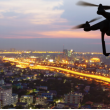Reducing chaos
In addition to geo-fencing, authorities could have leveraged high-accuracy wireless location technology in a machine-to-machine (M2M) application to track and direct snow plows and other public-safety vehicles. In a chaotic, post-disaster scenario, intelligence accessed through technology lessens dependence on overworked, stressed public authorities, which helps ensure a quicker recovery.
Similarly, authorities also could have created a geo-fence and transmitted mass alerts with instructions prior to the arrival of Hurricane Sandy. The snapshot of users in the impacted area would have been much more important than in the winter storm, because Sandy brought much more devastation and loss of life. Using advanced location analytics, authorities could have pieced together the last known location of subscribers, which would have made it easier to identify victims and notify loved ones. Using location and tracking, authorities could have monitored evacuation routes and directed residents toward less-congested pathways.
After the hurricane, the American Red Cross and other organizations mobilized more than 15,000 trained workers to assist in the impact zones. Many of these were volunteers from other states with little knowledge of the areas in which they found themselves working. In such situations, high-accuracy wireless location technology could be used to provide basic location-based services — such as identifying and navigating to nearby hospitals, food banks and shelters — so that volunteers could use their time more efficiently to assist survivors.
With sophisticated location solutions, enhanced features may be available that improve disaster response. For example, a location snapshot after the hurricane may find multiple devices converging in the vicinity of an unknown location. Using a feature called reverse geo-coding, authorities could zoom in on a map and hover over the location to note that the address is 123 Main Street. A simple database search might reveal that this is the location of a local community center, where residents who were supposed to have been evacuated went in search of shelter. They are in need of help, which is then dispatched using M2M technology to find the nearest police or ambulance.
Securing sensitive infrastructure
The 2011 Tōhoku earthquake—and subsequent tsunami and nuclear power plant accident—presents several illustrations of how high-accuracy wireless location technology can be used in the aftermath of a disaster. Previously mentioned uses of geo-fences, mass alerts, location and tracking all apply. Although the earthquake struck without warning, the tsunami took 30-60 minutes to reach land. This would be enough time to augment standard tsunami alerts to reflect the unprecedented scope of the disaster, by locating all devices in the estimated areas of impact, which reached several miles inland — areas typically not covered by standard tsunami alerts, which focus on coastal areas.
The value of location solutions, however, would be much more evident in the post-disaster cleanup and in dealing with the nuclear-plant accident. A sensitive facility such as a nuclear power plant should have had a geo-fence around it — separate from the one created for the disaster itself — to protect against possible terrorist sabotage. Had this been done, authorities would have had a historical snapshot that would have helped them understand who regularly was in the vicinity of the plant. After the meltdown and evacuation, a new geo-fence could have been created covering the 12-mile radius of the evacuation zone. Authorities would be alerted by a geo-fence violation whenever someone crossed the virtual barrier to approach the stricken plant. This use of high-accuracy location technology to assist with post-disaster recovery and to adapt to changing conditions illustrates its flexibility, adaptability and value.
As with any technology, there are limitations that authorities must consider before implementing this solution. With high-accuracy wireless location, there are privacy implications to identifying the location of all devices in a given area. Legislation to allow this in the case of disaster or other emergency could be enacted to safeguard against such concerns. There also are technical impacts that may arise if the wireless infrastructure is damaged during a disaster. In such a case, authorities would be wise to adopt complementary backup technologies, such as GPS, that would not be impacted, unlike terrestrial systems.
Fortunately these limitations are known and can be addressed, so authorities are able to utilize the many benefits of high-accuracy wireless location technology before, during and—perhaps most significantly—after a disaster strikes.
Manlio Allegra is president, CEO and co-founder of location-based solutions vendor Polaris Wireless.










